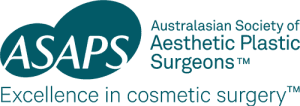Some cosmetic procedures, if deemed medically necessary, may be covered by you private health fund, making a big difference to the cost explains Australasian Society of Aesthetic Plastic Surgeons Member and Specialist Plastic Surgeon based in Newcastle, Dr Nicholas Moncrieff.
Procedures such as a breast reduction, tummy tucks, or skin removal following bariatric surgery are often covered by private health funds. However, elective cosmetic surgeries such as rhinoplasty (a nose job), breast augmentation or liposuction in non-medically necessary cases may not be covered or may not be fully covered.
I’m often asked who I’d recommend for health insurance, but of course, I can’t give advice because it depends on your circumstances and needs. In general, however, here are five things to consider:
- 12 month waiting period: Most funds require at least 12 months of membership before covering procedures so you may be best to secure that before you book in to see a Specialist Plastic Surgeon to make sure that your goals and health are assessed closer to the time that you may be able to have surgery. Things can change a lot in 12 months!
- What does the policy cover?: It is important to make sure your health fund covers the procedure you are considering, so you need to specifically ask if they cover the Medicare item numbers of the surgery you are looking at.
- Comparing funds: In Australia, many funds are run to benefit members, but some are companies listed on the stock exchange which means they have a legal obligation to maximise profits for shareholders. This sometimes results in below-industry rebate ratios for their policyholders. One independent source for comparing funds is the government website www.privatehealth.gov.au. It allows you to look at funds you are considering and then assess their pay-out ratios (how much they pay to policyholders vs the premiums they collect).
- “No-gap”: Health funds provide a great service to the community but as health costs rise across the population, and some funds try to make themselves more profitable for shareholders, they are putting pressure on doctors to accept, “no-gap” or “medi-gap” payments. It appears routine that members calling funds, after decades of paying premiums, asking why rebates are so low are told that the doctor should be accepting, “no-gap”. That is, they are pushing the blame back on the doctor. The reality is that modern medical practices simply can’t afford to run on the “no-gap” payments alone which are in some cases less than 40 per cent of the fees recommended to us by the Australian Medical Association.
- Be aware of terms and conditions: Unfortunately, it is common for patients to think they may be covered for a treatment or procedure, but when they try to claim the costs with their health insurance provider they are told it is not covered. Terms and conditions may change at any time and you should always contact your health insurance provider to check what is covered, both before you are considering a treatment and before booking the surgery.
If you believe your health fund should be paying more of your medical expenses, why not shop around to see what else is available to you to ensure you are getting the most from your health fund?

